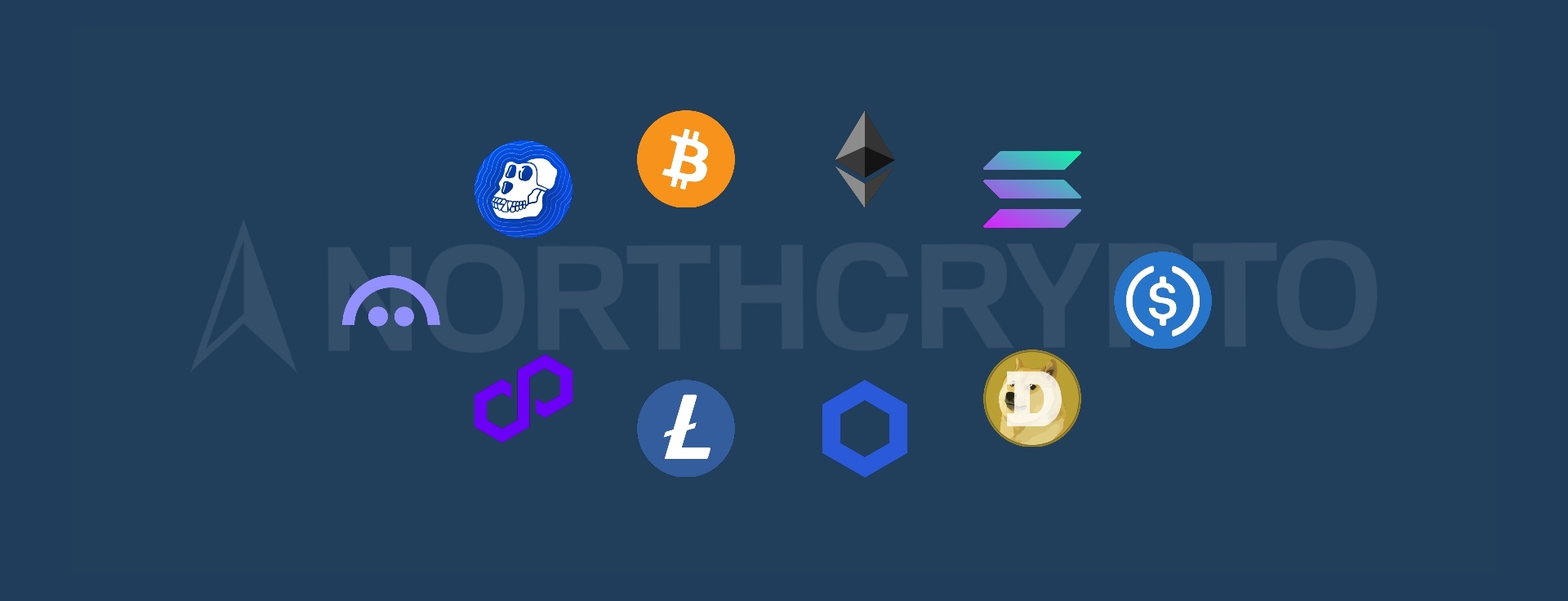How to get income with cryptocurrencies?
Investing
Over the years, cryptocurrencies have become a significant investment category, offering unique opportunities to earn and grow wealth. With the help of cryptocurrencies, investors can often accumulate returns for themselves in different ways. In this text, we will learn about these ways in more detail, and we will also consider what kind of risks and opportunities they contain.
Trading
By far the most popular way to make profits with cryptocurrency is, of course, buying and selling cryptocurrencies at the right time. Cryptocurrency trading is buying and selling cryptocurrencies on different exchanges or decentralized exchanges (DEX). It includes several different strategies, such as long-term investing (holding) to wait for the value of cryptocurrencies to rise, short-term trading to take advantage of rapid price fluctuations, and arbitrage, which takes advantage of price differences in different trading venues.
Cryptocurrency trading offers several different ways to earn income. The most popular of these are presented below:
Exploiting the price difference: Fluctuations in the prices of cryptocurrencies offer the opportunity to earn income by buying cheap and selling expensive on different trading platforms. This strategy is known as arbitrage. Arbitrage trading requires a quick reaction and understanding of the cryptocurrency market from the investor. Price differences can disappear quickly, so the investor must be constantly alert. It is also important to consider transaction fees and other costs that can reduce profits.
Short-term trading: Day trading, or short-term trading as it is called, is based on predicting price fluctuations in the short term. The goal is to take advantage of rapid price changes and make a profit quickly. This strategy requires a lot of time, monitoring and understanding of the market from the investor. It is also riskier than long-term investing because prices can fluctuate quickly and unpredictably in the cryptocurrency market.
Long-term investment: Long-term investment, i.e. holding, is by far the most popular form of cryptocurrency investment. Investing in cryptocurrencies in the long term is based on belief in the future potential of cryptocurrencies. This may include investing in the largest projects measured by market capitalization, or alternatively in completely new entrants that are believed to increase in value over time. This strategy is based on the appreciation of cryptocurrencies over time and is especially suitable for risk-tolerant investors who are willing to hold their cryptocurrencies for several years.
Cryptocurrency trading offers investors several different ways to earn returns. It offers several strategies, each with its own unique features and earning potential. It is important for investors to choose a strategy that best suits their own risk profile, goals and skills.
Mining
The administrators of cryptocurrency blockchains based on the Proof of Work (PoW) consensus algorithm are called miners. Cryptocurrency mining is a process where blockchain administrators, i.e. miners, build new blocks on the blockchain. Miners collect the transactions performed with cryptocurrency and form a block from them, which is connected as a continuation of the blockchain. Each block refers to the previous block, thus forming a chain consisting of interconnected blocks, i.e. the data in the chain.
It is possible to get income from cryptocurrency mining in the following ways:
Miner's reward: Miners receive a mining reward for the work of maintaining the blockchain. The block reward is therefore an incentive for miners to participate in the maintenance work of the blockchain and ensure its operation.
Transaction fees: Miners receive income not only from mining fees but also from network transaction fees. The transaction fee serves as compensation for the transaction completed online. The size of the transaction fee varies depending on the cryptocurrency, network congestion and the transfer priority set by the user.
The profitability of cryptocurrency mining is the sum of several different factors. These factors include, for example:
Cryptocurrency price: An increase in the value of cryptocurrency increases the profitability of mining. On the other hand, currency price fluctuations can also affect profitability, when the resources used for mining do not necessarily produce the expected return when the value of the currency falls.
Price of electricity: The profitability of mining depends greatly on the price of electricity, because mining takes a lot of energy. Inexpensive electricity can therefore significantly improve the profitability of mining, while high electricity prices can eat up a large part of the yield.
Efficiency of mining equipment: More efficient mining equipment produces more cryptocurrency with the same amount of energy compared to less efficient equipment. This means that by investing in more efficient equipment, miners can improve the productivity and profitability of their mining.
Cryptocurrency mining is one of the most traditional ways to earn income in the cryptocurrency world. The return from mining cryptocurrencies can vary significantly depending on several different variables. The profitability of mining depends, among other things, on the price of cryptocurrency, the efficiency of mining equipment and the price of electricity. Mining offers both the opportunity to earn cryptocurrency in the form of block rewards and transaction fees, as well as participate in the maintenance work of the blockchain and ensure its operation.
Staking
Staking differs from mining in that, in staking, the blockchain maintenance work is performed by locking cryptocurrency instead of using large amounts of computing power and energy to solve complex mathematical problems familiar from traditional mining. In the Proof of Stake (PoS) algorithm that enables staking, validators are selected based on the amount of cryptocurrency locked, while in the Proof of Work (PoW) consensus algorithm, miners compete with each other using computing power. This makes staking a more energy-efficient and often more affordable option for the investor for maintaining the blockchain and accumulating passive income.
In practice, staking cryptocurrency works as follows:
Stakers who lock the cryptocurrency act as validators. Their job is to confirm transactions and add new blocks to the blockchain.
Validators receive cryptocurrency as a reward for validating new blocks. The amount of the reward is directly proportional to the amount of cryptocurrency staked.
The popularity of staking has grown considerably over the past few years, and today most platforms use it in the maintenance work of blockchains. Below are presented the main advantages of staking compared to traditional mining:
Energy and cost efficiency: Unlike traditional mining, staking does not require large equipment investments or high energy consumption.
Ease: Steaking is usually easy. Many cryptocurrency wallets and exchanges offer users the opportunity to stake directly through their platforms.
Passive income: By staking, you can earn passive income, because locked cryptocurrencies generate interest over time.
Impact on the market: Staking reduces the number of cryptocurrencies on the market, which can contribute to the increase in value of that currency.
Today, staking is a very popular way of earning money among those who invest in cryptocurrencies. With the help of staking, it is possible for the investor to earn returns without large equipment investments. At its best, with the help of staking, it is possible for the investor to achieve an annual return of several percent on the invested capital. In addition, participating in the stake also helps to support the security and stability of the network of the cryptocurrency that is the subject of the stake.
Yield Farming
Yield Farming is a strategy used in the cryptocurrency market where investors seek to earn returns by investing funds in various decentralized finance (DeFi) protocols. In practice, it is therefore about earning interest income by providing liquidity. At this point, the reader should also know that from the investor's point of view, Yield Farming contains more risks than the earning methods mentioned earlier in the text.
Yield Farming may sound complicated at first, but it's basically a very simple way to earn income. Next, let's go through how Yield Farming works in practice:
Choose a DeFi protocol:Investors choose a DeFi protocol that offers Yield Farming opportunities.
Deposit cryptocurrency on the lending platform: Investors deposit their cryptocurrency in the DeFi protocol of their choice. This can be a single cryptocurrency or a cryptocurrency pair such as ETH/USDC.
Earn interest: Deposited cryptocurrencies are lent to other users or used as part of liquidity pools, and investors receive interest income in return. The interest rate is determined by demand and supply and can vary greatly between different protocols.
Collaterals for loans: Loans are usually overcollateralized, which means that borrowers deposit more collateral than they borrow.
Yield Optimization: Those involved in Yield Farming also often seek to optimize returns by moving their funds between different protocols. This can include combining multiple protocols and liquidity pools, as well as constantly reinvesting returns to maximize profits.
Yield Farming offers the potential for high returns, but it also carries significant risks. Here is more about the risks that those practicing Yield Farming should take into account:
Market risks: Price fluctuations of cryptocurrencies can affect the value of invested funds. Naturally, this also has an impact on the amount of income from Yield Farming.
Protocol risks: DeFi protocols may contain code errors or vulnerabilities, which in the worst case may lead to the loss of invested funds.
Liquidity risks: Volatility in liquidity pools can lead to unexpected losses. This is especially pronounced in smaller and less well-known pools. In larger services, this risk is significantly lower.
Impermanent loss: Providing liquidity to the pool can expose investors to the impermanent loss phenomenon, where price fluctuations negatively affect the value of the invested capital.
Legislation: The regulation of decentralized finance is in a developing stage, and changes in legislation may affect the regulation of Yield Farming.
Yield Farming is one of the most popular ways to earn income in the cryptocurrency market. Its basic principle is based on utilizing the possibilities offered by various DeFi protocols. Although Yield Farming can offer significant returns, it also involves risks. Because of this, investors should familiarize themselves with the topic and the operation of the DeFi protocols they use carefully before starting to invest. As in all investments, diversification and risk management are key here as well.
NFTs
An NFT (non-fungible token) is a unique digital commodity created on top of the blockchain that can represent any commodity in the real or digital world. Currently, the most typical NFTs are works of art, pieces of music, video game collections, and other digital collectibles brought onto the blockchain. In the future, the uses of NFTs will not only be limited to these, but more and more real-world commodities will likely be tokenized as NFTs on top of the blockchain.
NFTs differ from traditional cryptocurrencies in terms of their tradability. Typically, cryptocurrencies can be divided into smaller parts, but NFTs are unique and indivisible units. The value of an NFT is determined by the digital commodity it represents.
NFTs enable digital scarcity, which is important for maintaining the value of digital assets. Before NFT technology, it was possible to copy digital content without limits, which made proving ownership and authenticity challenging. NFTs are always located on the blockchain, thanks to which their ownership can be easily verified and transferred from one person to another if necessary.
With NFTs, it is possible to earn income in many different ways. The increased popularity of NFTs among investors has led to extensive infrastructure development. Thanks to this, NFTs today offer investors several different earning opportunities, more of which will be explained below:
Trading: Buying and selling NFTs on marketplaces that focus on them, such as OpenSea, Blur and Magic Eden, is naturally the most common and traditional way of earning. Investors can buy NFTs at a lower price and sell them at a higher price depending on the market situation.
Royalties: Many NFTs allow creators to receive royalties for each resale. This means that the original creator will receive a percentage of every sale of the NFT in the future. This creates a constant stream of income for artists and content creators.
Lending and pledging: Nowadays, NFTs can also be used as collateral for loans. In this way, an NFT owner can obtain liquidity from their holdings without having to sell them.
Renting: On some platforms, NFTs, like virtual real estate or game items, can be rented out to other users, providing an entirely new revenue stream for NFT owners.
Communities and bonuses: NFTs often provide their holder with various additional benefits and bonuses, such as access to exclusive communities, events, and the opportunity to acquire new digital assets or tokens. This in turn increases the value and potential returns of such NFTs.
The uses of NFTs are constantly expanding. NFTs can be used to tokenize e.g. real estate, insurance, shares and other real-world commodities. This expands the possibilities of earning returns with NFTs even further. In addition, new DeFi services and investment products are constantly developing around the NFT market, which make NFT investing even more versatile and easier. With these innovations, NFTs are likely to become an increasingly important part of both the digital and real-world economy, offering investors entirely new ways to earn themselves returns.
Airdrops
Airdrop is one of the most talked about terms in the cryptocurrency world at the moment. In practice, airdrop is a marketing strategy where cryptocurrency projects distribute free tokens to their current or potential users. The purpose is to increase awareness of the project, attract new users and create an active community around cryptocurrency.
Airdrops can be direct or conditional in their implementation. Direct airdrops distribute tokens without specific requirements, while conditional airdrops require certain actions, such as registering, following the project on social media, or participating in community activities. This increases community engagement and creates interaction around the project.
With airdrops, projects can also test and verify the functionality of their blockchain. When a large number of users receive and use tokens, it gives developers valuable feedback about the scalability and security of the system. Gathering this feedback can be critical to the future development and success of the project.
Airdrops can happen in many different ways. The most common methods are:
Direct airdrop: Projects can send tokens directly to users' wallets. This can be based on users holding a certain cryptocurrency in a certain wallet or meeting certain pre-defined conditions.
Activity in the ecosystem and tasks: Users can earn tokens by registering on the project website, using the service provided by the project, following it on social media, joining the newsletter or completing various tasks.
Airdrops offer investors several different ways to earn returns:
Increase in value of tokens: If the value of the tokens received through the airdrop increases, the recipients of the airdrop can sell their tokens and earn income.
Long-term investments: In some cases, tokens received through an airdrop can increase in value significantly over time. This requires that the project is able to gain popularity among investors and users.
Staking and providing liquidity: Tokens received via Airdrop can mostly be used for staking or providing liquidity, in which case they generate passive income in the form of interest income.
Participation in the project ecosystem: Some projects offer airdrop recipients the opportunity to participate in project management or receive other possible benefits in the ecosystem.
Airdrops and their pursuit can at best offer investors valuable experience and understanding of the operation of different projects and the market situation. Participating in airdrops gives users the opportunity to familiarize themselves with various cryptocurrency projects and the services they offer without large financial risks. This can help investors make more informed decisions about their future investments and better diversify risk in the cryptocurrency market.
While airdrops can offer an attractive opportunity to earn free tokens, it's important to remember that they also come with risks. Participating in airdrops can cause unnecessary costs, for example in the form of transfer fees, if the tokens are of little value or cannot be used as desired.
Overall, airdrops can be a good way to earn income and get to know different cryptocurrency projects. However, the investor must remember to do careful background work and familiarize himself with the possible return and terms of the airdrop. Participating in airdrops should be seen as part of a broader investment strategy and remember to spread the risks appropriately.
Referral programs
Referral programs refer to referral programs offered by cryptocurrency platforms, where users receive rewards for bringing new customers to the service. Northcrypto users can earn themselves income by recommending their service to their friends.
Our referral program is an incentive program that encourages you to recommend our service to your friends. When you invite friends to register with our service, you will receive 0.5% of their trading volume in your account during the first six months of registration. For example, if a person registered through your invitation link makes transactions for 5,000 euros during the first six months, you will receive 25 euros in your account. The rewards of the referral program are credited to your account in real time when the transactions are completed and they are always paid in the relevant currency that the person you invited is selling at any given time. You can track the statistics of your invite link and the rewards you earn on this page. You can find more information about Northcrypto's referral program when logged in in the browser version behind the user icon on the referral page. In the mobile application, the referral program can be found by pressing the three dots in the lower right corner. You can also find your own invitation link on this page.
Summary
In the world of cryptocurrencies, you can get income in many different ways, of which all the most common ones are presented in the text. The most popular method to accumulate income is naturally trading, where cryptocurrencies are bought and sold at the right time to make a profit. This can include different strategies such as arbitrage, short-term trading and long-term investing.
Cryptocurrency mining, on the other hand, is one of the most traditional ways to earn income in the cryptocurrency market. The profitability of mining is influenced by, for example, the price of cryptocurrency, the price of electricity and the efficiency of mining equipment. Staking is an energy- and cost-effective way to earn passive income by locking cryptocurrency to the network, whereby validators receive rewards for maintaining the blockchain. This method is especially suitable for those who want to avoid the large equipment investments familiar from mining.
Yield Farming, i.e. investing funds in various decentralized finance (DeFi) protocols, offers investors the opportunity to earn interest income. However, it involves risks such as market risks and protocol vulnerabilities.
NFTs are unique digital assets that can be bought, sold and used as collateral for a loan. Airdrops, on the other hand, mean that cryptocurrency projects distribute free tokens to their users. They can provide income through token appreciation, staking or participation in the ecosystem.
Referral programs allow you to earn income from bringing new users to cryptocurrency platforms. For example, in Northcrypto's referral program, users can earn rewards based on the trading volume of the people they invite.
In order to be successful, it is important for every investor to assess their own risk tolerance and choose the best suited strategies. In addition to the examples presented in the text, the cryptocurrency market also allows investors numerous other ways to earn income for themselves. By following the cryptocurrency market and doing your own research, it is possible to find the most suitable ways to accumulate income.
Mikko Soon
Head of Northcrypto Private
Last updated: 14.06.2024 14:30



